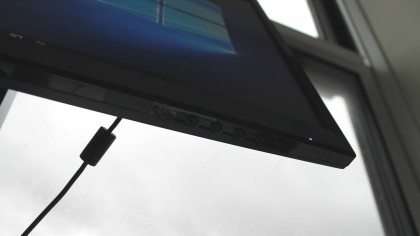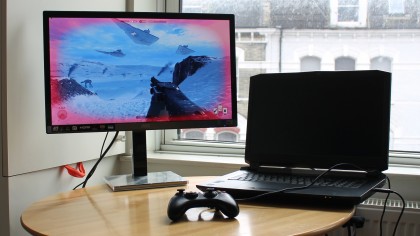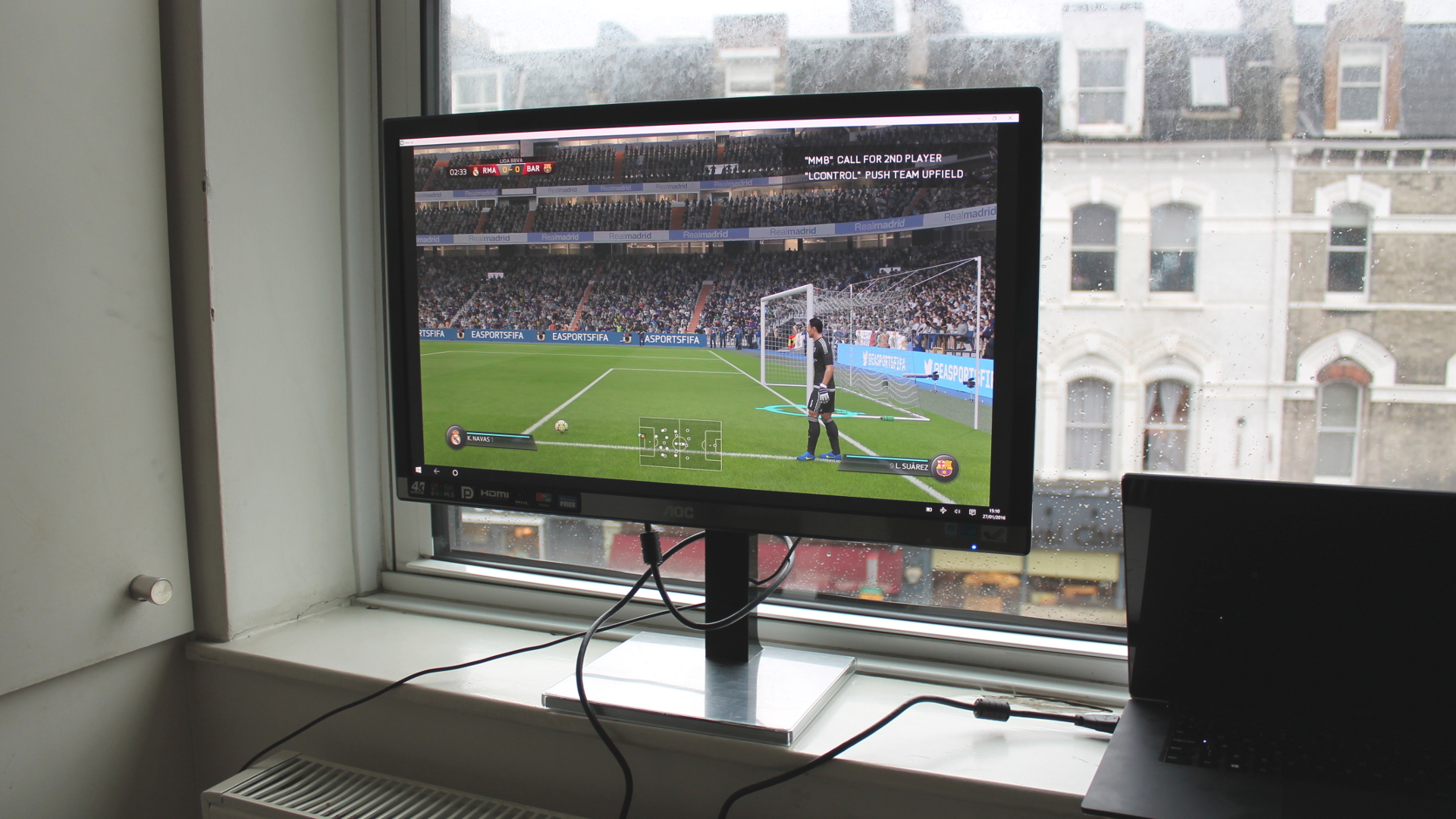TechRadar Verdict
This compact 4K monitor offers razor sharp picture quality out of the box and is a snug fit for surfing the web, productivity and gaming. As is typical for AOC, it's also good value.
Pros
- +
Compact design
- +
Pin-sharp picture quality
- +
HDMI 2.0
- +
Good value
Cons
- -
No frame-syncing tech
- -
Lacks swivel
- -
Requires OS scaling to read text comfortably
Why you can trust TechRadar
AOC is one of the first monitor brands that springs to my mind when it comes to affordability. So, it came as no surprise to learn that its latest 4K (or Ultra HD) display, the U2477PWQ, provides a pin-sharp picture without breaking the bank.
The U2477PWQ's clarity and price are both directly related to its compact size. Second only to the 21.5-inch iMac with 4K Retina display, it measures just 23.6 inches across the diagonal. It's also much thinner and lighter than the iMac, as – duh – Apple's machine stuffs a full computer behind the display.

I find using AOC's compact monitor to be a refreshing experience. Coming from 27-inch and larger Ultra HD monitors, I can sit closer to the U2477PWQ without suffering eye fatigue after hours of use. It's certainly more suitable for the small desk in my typically compact London flat.
Of course, it's not the only 24-inch 4K monitor on the market, but, at £320 on Amazon (around $455 or AUS$612) the U2477PWQ manages to undercut the competition.
Dell's 23.8-inch P2415Q goes for around £360 (about $511, or AUS$688), more than twice the cost of the professional-grade, 24-inch NEC EA244UHD that sells for about £800 (around $1,137 or AUS$1,531). Unless you're a professional who requires pinpoint color accuracy, either the AOC or the Dell will serve your needs.
In the frame
Budget monitors tend to feature bland designs, but not the U2477PWQ. Its matching silver base and stand contrast well with the black around the bezel and rear of the display.
AOC has used a brushed aluminium effect to lend the monitor a premium flavor, and it holds up well compared to models three times its cost.
Sign up for breaking news, reviews, opinion, top tech deals, and more.

Specs and performance
Featuring a pixel-resolution of 3,840 x 2,160, the U2477PWQ crams in four times the number of pixels than a standard 1080p monitor. The benefits of that are numerous: more real-estate on the desktop to snap apps to the side of the screen, plus room to see more of images without zooming and read more text without scrolling.
All of that space is also essential for editing large and unwieldy spreadsheets, as you can see far more rows and columns than you would on a conventional 1080p display. However, one of the drawbacks to the UP2477WQ's size is that I find it nearly impossible to make out text, menus and icon labels with the display set to 100% scaling.
Whether you're using Mac OS X or Windows, using a scaling setting above 100% is essential to read what's being shown on the display. I find that 125% in Windows 10 hits the sweet spot between space on the desktop and readability.
One of the advantages of opting for a larger 21:9 "cinematic" monitor — like the Philips Brilliance BDM3490UC — is that it is possible to use them at their native 3,440 x 1,440 pixel-resolution with 100% scaling and read everything on the screen comfortably.
Well-connected
The highlight of the U2477PWQ's connectivity options is its HDMI 2.0 port, which lets you display content from compatible devices – like TVs, laptops, PCs or Blu-Ray players – with a refresh rate of 60Hz. Dell's P2415Q, on the other hand, has a HDMI 1.4 port and is limited to 30Hz.
The AOC's other ports include DisplayPort, which also supports 60Hz at 4K resolution, in addition to DVI and VGA that are restricted to 30Hz at 4K.

Its response time of 4 milliseconds (or ms) is plenty fast, even if it's not quite as low as the 1ms response times that often come with Twisted Nematic (or TN) displays designed for gaming. Even so, the UP2477PWQ is still a great fit for 4K gaming – only the absence of frame-syncing tech, like Nvidia G-Sync or AMD FreeSync, keeps it from being a flawless gaming option.
It's still extremely impressive, allowing for fluid visuals when hooked up to PC Specialist's beefy Octane II using DisplayPort to run a few multiplayer rounds of Star Wars: Battlefront.

In addition to packing plenty of pixels, the UP277WQ's vibrant display is stuffed full of color. It uses a Plane-to-line Switching (PLS) panel, which is similar to In-plane Switching (IPS) and offers great 178-degree viewing angles, high brightness levels and vivid colors.
Measured with an X-Rite i1Display Pro Calibrator, the AOC achieved 293 cd/m2 (or candela per square meter), almost matching AOC's advertised 300cd/m2.
The UP277WQ is capable of displaying 16.7 million colors, with a contrast ratio of 1,000:1 (and a dynamic contrast ratio of 50,000,000:1). Uncalibrated, the UP277WQ displays pearly whites and well-balanced color tones. Whether gaming in Battlefront, viewing high-resolution images taken on a Canon 1100D, or browsing websites, blacks appear deep with colors that 'pop'.

I would have welcomed a little more flexibility in the U2477PWQ, which can tilt a fractional amount up or down but can't pivot from side-to-side. Its square stand and arm feature a small amount of height adjustment functionality, if only a few inches up or down.

